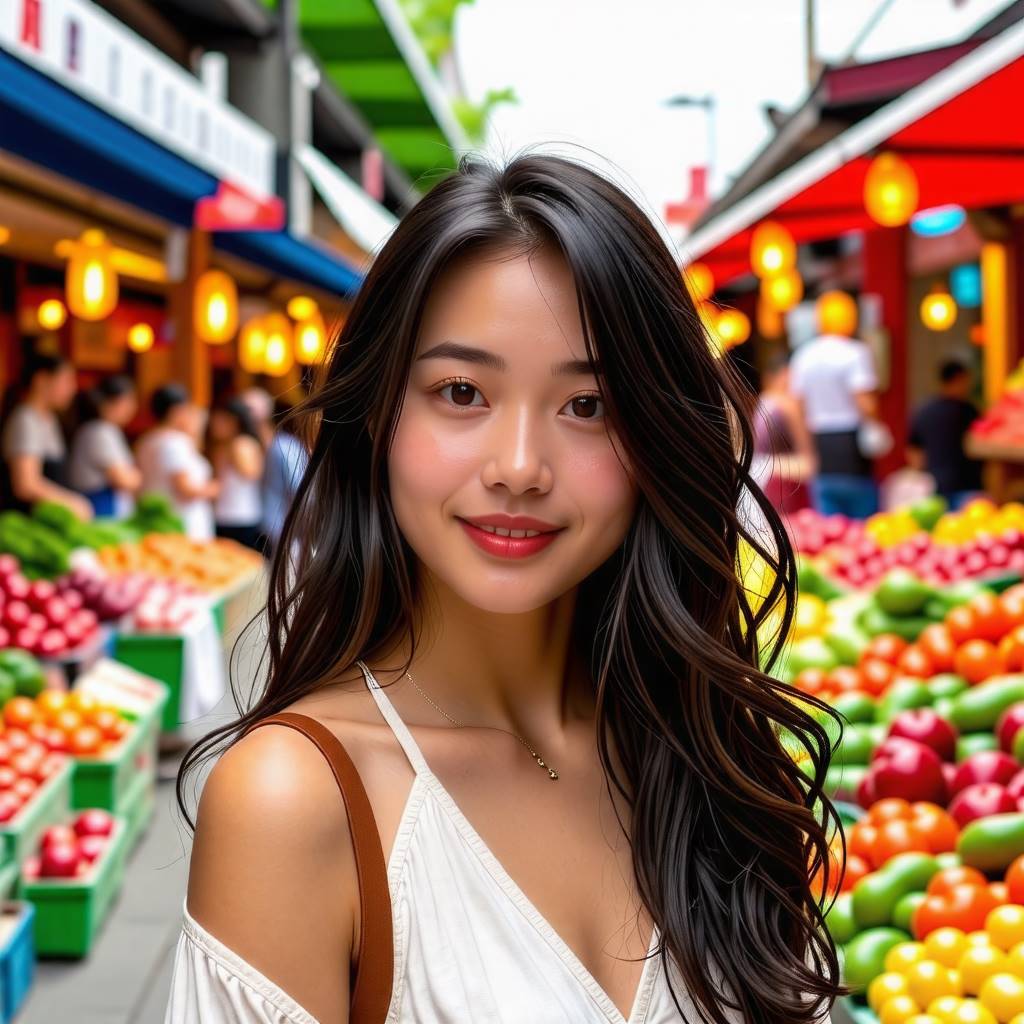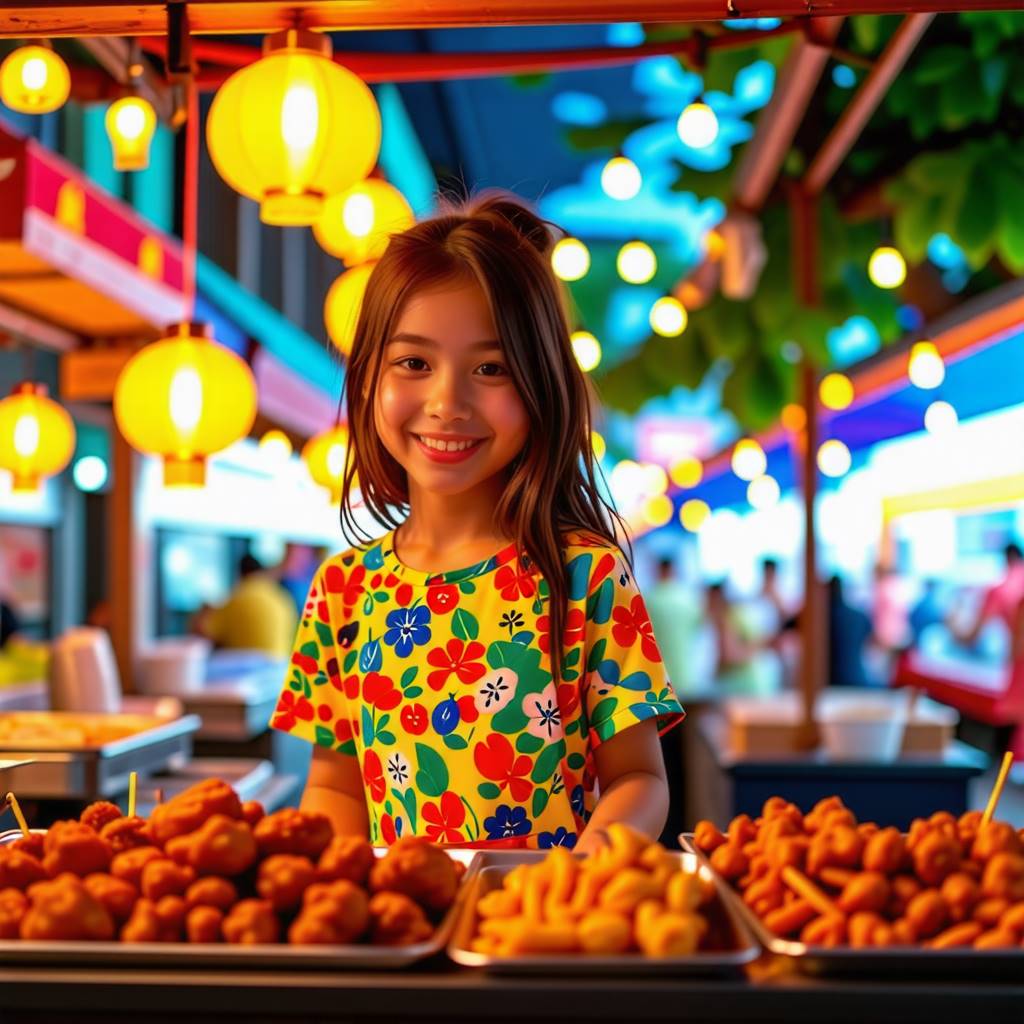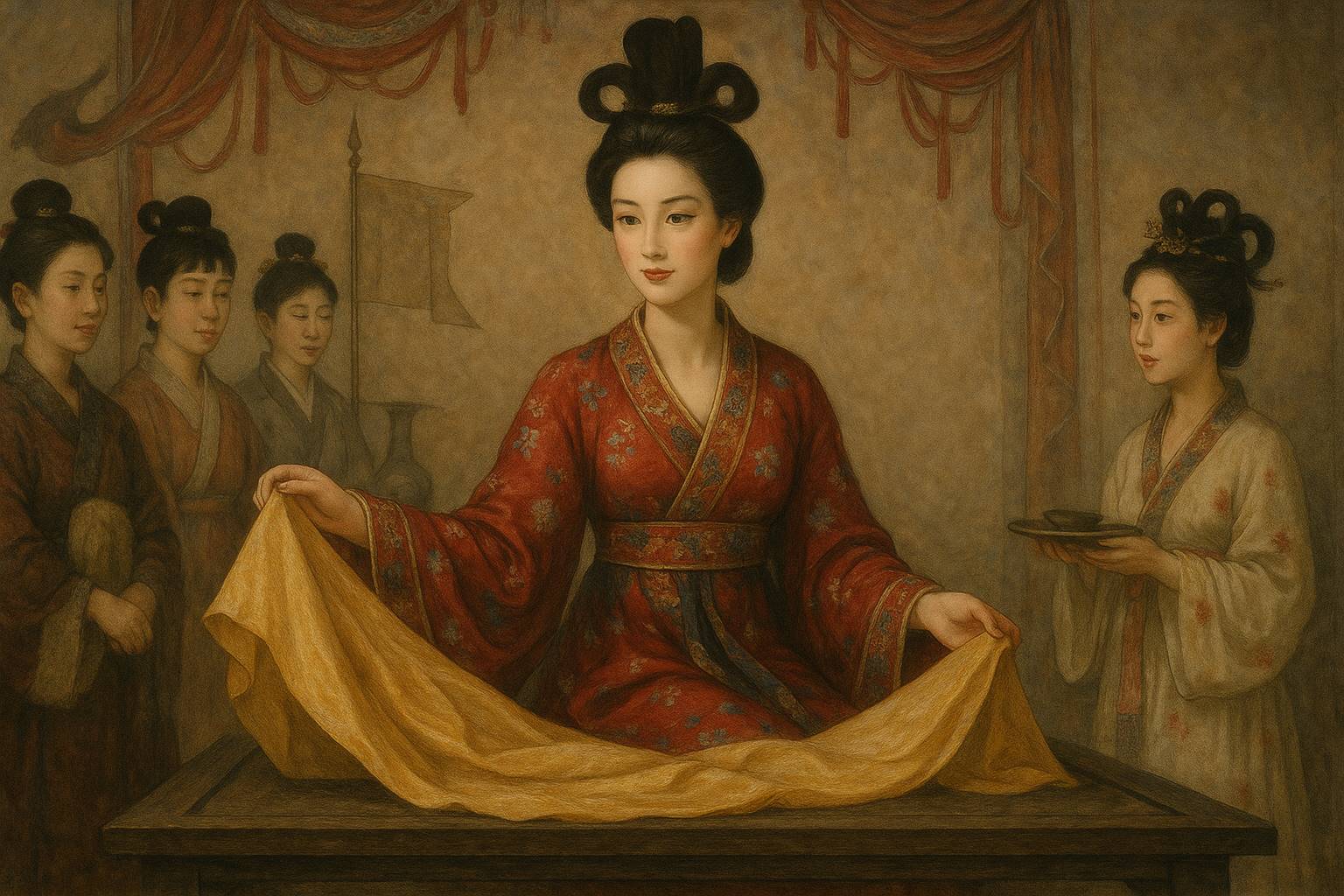Warm Stories of Traditional Markets and AI Image Impressions
In today’s society, where large supermarkets and online shopping malls have rapidly established themselves, traditional markets, with their long traditions and human warmth, are slowly being forgotten. However, our traditional markets are more than just commercial spaces; they are warm meeting places where families and neighbors come together.
Recently, an impression using AI technology, “Drawing Beauties in Korean Markets,” was released. These images re-illuminate the vibrant energy and emotions in traditional markets, even amidst the decline caused by large supermarkets. In this post, we will share warm stories of the market by introducing the origin and history of traditional Korean markets, their modern friendly appearance, and representative Korean traditional markets associated with each photo.
1. The Origin and Warm History of Korean Traditional Markets
The history of Korean traditional markets begins with records of the first permanent market opening in Gyeongju around 490 AD. The Gyeongju market during the Unified Silla period was the center of local economy and information exchange, where people shared their lives and built warm relationships.
During the Joseon Dynasty, 5-day markets and permanent markets were introduced, where rural and urban residents gathered on certain dates to trade goods and promote friendship. Namdaemun Market and Dongdaemun Market have long been regular spots for Seoul citizens, evolving into cultural spaces where families and neighbors gather to share affection.
Example: Namdaemun Market is a representative traditional market with a long history, and it has established itself as a warm meeting place that citizens visit every day.
2. Changes in Traditional Markets Since Modern Times and Their Modern Friendly Appearance
As industrialization and urbanization accelerated, traditional markets faced difficulties competing with large supermarkets, department stores, and online shopping malls. In the early 20th century, many traditional markets were weakened by Japanese colonial rule and rapid urbanization after liberation, but they still remain friendly spaces that local residents frequent.
The ‘bargaining culture’ in traditional markets is more than just adjusting prices; it is an important cultural asset that forms family-like emotions and trust between merchants and customers. Warm memories of merchants giving extra goods to regular customers or neighbors exchanging greetings in the old market scenes are still carried on in some markets today.
3. AI Image Impressions and Stories of Related Korean Markets
Recent AI-generated image impressions newly illuminate the beauty and warmth of traditional markets. Along with impressions of each photo, we introduce representative traditional markets that match each image.
3-1. A Cute Little Girl Selling Skewers and Fried Foods
The first photo captures a cute little girl selling skewers and fried foods, wearing colorful clothes and smiling brightly. This photo well represents the vibrancy and positive atmosphere of traditional markets, and evokes a sense of familiarity with the market.
Related Market:
- Namdaemun Market: A regular market enjoyed by Seoul citizens in its long history, offering a variety of foods and small attractions, where you can feel a warm atmosphere.

3-2. A Stylish Woman Against the Backdrop of a Seafood Market
The second photo features a stylish woman in elegant attire against the backdrop of a seafood market full of fresh seafood. This image reminds us that traditional markets can contain both modern sensibility and style.
Related Market:
- Busan Jagalchi Market: Busan’s representative seafood market, where fresh seafood and the smiles of energetic merchants harmonize, where you can experience the vibrancy and modern style of traditional markets at the same time.
3-3. A Woman Smiling in a Market Full of Various Fruits and Vegetables
The third photo captures a woman smiling brightly in a market full of abundant fruits and vegetables. This photo vividly conveys the abundance, warmth, and natural vibrancy of traditional markets.
Related Market:
- Tongin Market: Famous as a Seoul alley market, especially Tongin Market, where you can enjoy unique foods such as Yeopjeon lunch boxes, retains a simple and warm market atmosphere.

As such, the examples of each market associated with AI image impressions show that traditional markets are not just commercial spaces, but special spaces with a long history and the warm emotions of people.
4. Efforts to Revitalize Traditional Markets and Friendly Changes
The government, local governments, and local merchants are making various efforts to ensure that traditional markets become warm cultural spaces loved by many people today, not just old marketplaces.
- Facility Improvement: To modernize old buildings and inconvenient facilities, we are expanding convenience facilities such as arcades, parking lots, and restrooms to allow visitors to use them comfortably.
- Cultural Tourism Market: Traditional markets are being reorganized into cultural spaces where families and foreign tourists can enjoy together through various events such as traditional food experiences, craft exhibitions, and local festivals.
- Digital Transformation: We are increasing the convenience of using traditional markets by introducing Onnuri gift certificates, mobile payment systems, and online promotion and delivery services to meet the needs of modern consumers.
These friendly efforts are helping traditional markets to inherit the emotions and memories they have accumulated over a long period of time, while also becoming spaces with modern convenience and cultural value.
5. Examples of Representative Korean Traditional Markets and Introduction to Friendly Market Scenes
Korean traditional markets exist all over the country, and each market has its own unique history and warm emotions.
- Namdaemun Market: As Seoul’s representative traditional market, it has a long history and a collection of various foods and shops. Visitors can feel family-like affection through warm communication with merchants.
- Dongdaemun Market: Although it is a market focused on fashion and clothing, it is a place with a long tradition and lively encounters with people, where you can experience a friendly market culture.
- Gwangjang Market: A market where you can enjoy traditional foods such as Bindaetteok and Mayak Gimbap, it is a warm place full of small happiness and memories.
- Tongin Market: You can feel the atmosphere of Seoul’s alley market, and you can experience the unique charm of traditional markets through unique foods such as Yeopjeon lunch boxes.
- Busan Jagalchi Market: A representative seafood market with fresh seafood and a lively atmosphere, where you can feel the vibrancy and modern style of traditional markets at the same time.
These markets each have different characteristics and histories, but they all have the common charm of conveying warm emotions, encounters with people, and small happiness.
Warm Stories of Our Market Together
Korean traditional markets are precious cultural heritages with a long history, people’s emotions, and warm memories. The AI-reinterpreted images and the various friendly revitalization efforts by the government, local governments, and local merchants show that traditional markets are not just old marketplaces, but living cultural spaces that we all create together.
If you have the opportunity to read this article, we hope you will visit our local traditional market with your family, friends, and neighbors to experience its warm emotions and small happiness first-hand.
We hope that the history of traditional markets and the warm stories of people will bring smiles and memories to your daily life.






Leave a Reply